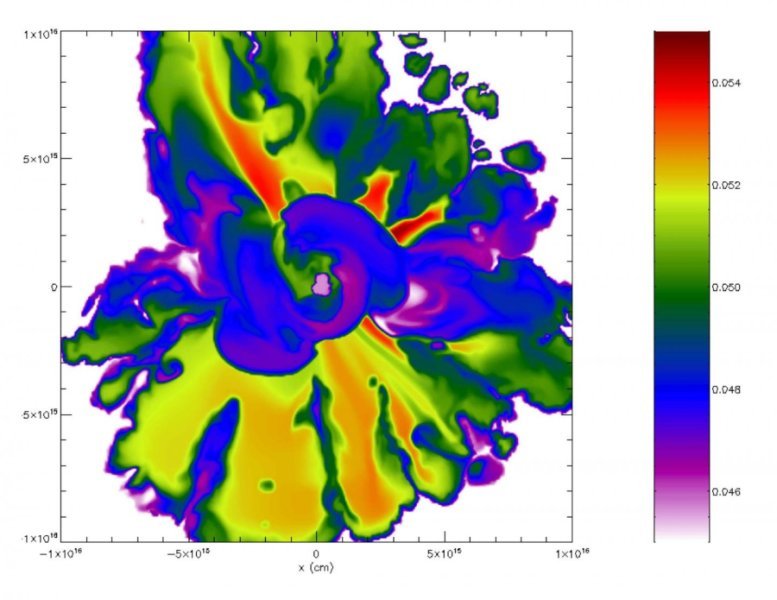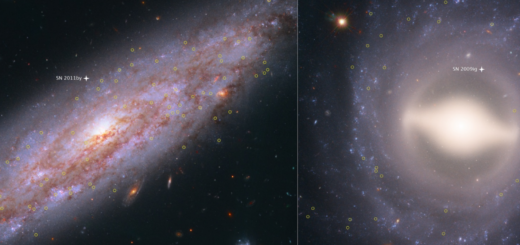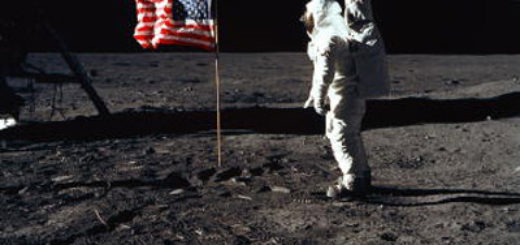Was Our Solar System Formed By Shock Wave From Exploding Supernova? New Study Supports Old Theory

Our Solar System’s formation was triggered by a shock wave from an exploding supernova, according to one of theories.
Now, a new study conducted by Carnegie’s Alan P. Boss and his team from Carnegie Institution for Science, supports the existing theory by modeling the Solar System’s formation beyond the initial cloud collapse and into the intermediate stages of star formation.
The shock wave injected material from the exploding star into a neighboring cloud of dust and gas, causing it to collapse in on itself and form the Sun and its surrounding planets.
Researchers use the chemistry of meteorite for testing theories of Solar System formation and this method is an important part of their work because meteorites retain a record of the elements, isotopes, and compounds that existed in the system’s earliest days.
One type, called carbonaceous chondrites, includes some of the most-primitive known samples. An interesting component of chondrites’ makeup is something called short-lived radioactive isotopes. Isotopes are versions of elements with the same number of protons, but a different number of neutrons.
As the number of neutrons present in the nucleus, can sometimes make the isotope unstable, to gain stability, the isotope releases energetic particles, which alters its number of protons and neutrons, transmuting it into another element.
Some isotopes that existed when the Solar System formed are radioactive and have decay rates that caused them to become extinct within tens to hundreds of million years. The fact that these isotopes still existed when chondrites formed is shown by the abundances of their stable decay products—also called daughter isotopes—found in some primitive chondrites.
Measuring the amount of these daughter isotopes can tell scientists when, and possibly how, the chondrites formed.
A recent analysis of chondrites by Carnegie’s Myriam Telus was concerned with iron-60, a short-lived radioactive isotope that decays into nickel-60. It is only created in significant amounts by nuclear reactions inside certain kinds of stars, including supernovae or what are called asymptotic giant branch (AGB) stars.
Because all the iron-60 from the Solar System’s formation has long since decayed, Telus’ research, published in Geochimica et Cosmochimica Acta, focused on its daughter product, nickel-60. There are not many options for how an excess of iron-60—which later decayed into nickel-60—could have gotten into a primitive Solar System object in the first place—one of them being a supernova.
While her research did not find a “smoking gun,” definitively proving that the radioactive isotopes were injected by a shock wave, Telus did show that the amount of Fe-60 present in the early Solar System is consistent with a supernova origin.
Boss revisited his earlier models of shock wave-triggered cloud collapse, extending his computational models beyond the initial collapse and into the intermediate stages of star formation, when the Sun was first being created, an important next step in tying together Solar System origin modeling and meteorite sample analysis.
“My findings indicate that a supernova shock wave is still the most-plausible origin story for explaining the short lived radioactive isotopes in our Solar System,” Boss said.
The research is published by The Astrophysical Journal.



 Creators of mankind
Creators of mankind Description of “Tall white aliens”
Description of “Tall white aliens” Where they came from?
Where they came from? About hostile civilizations
About hostile civilizations The war for the Earth
The war for the Earth “Tall white aliens” about eternal life
“Tall white aliens” about eternal life Video: “Nordic aliens”
Video: “Nordic aliens” Aliens
Aliens Alien encounters
Alien encounters The aliens base
The aliens base UFO
UFO Technology UFO
Technology UFO Underground civilization
Underground civilization Ancient alien artifacts
Ancient alien artifacts Military and UFO
Military and UFO Mysteries and hypotheses
Mysteries and hypotheses Scientific facts
Scientific facts


















